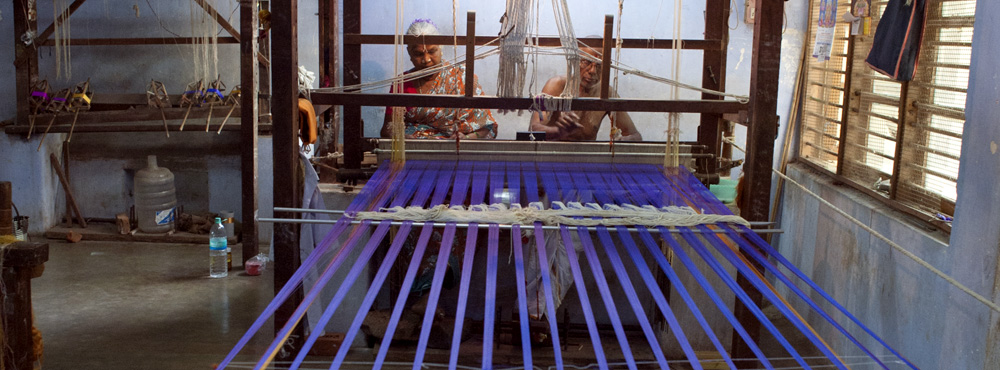Weaving

While Tamil Nadu has a number of weaving traditions, and a history of handloom weaving dating back to the Sangam period, the weaving centre produces those of the Kanchipuram tradition. These silk saris require intricate weaving methods and a large investment of time by weavers. A complex weaving technique known as ‘korvai’ is used to interlace the borders with the body of the sari. The contrasting colors of the borders in the weaving of the weft are interlinked with the body of the weft with each throw of the shuttle. Two weavers are required, one to operate the threads for the central portion and another to operate the border colors. Since borders often appear on both sides of the saris, each Kanchipuram sari requires three shuttles. The elaborate pallus are also linked to the main body of the sari using a special interlinking weave known as ‘pitni.’ In the hands of the skilled craftsman, this join looks like one continuous weave. This tradition of saris is also distinguished by its motifs, often inspired by the beautiful carvings found in the temples of Kanchipuram.
Capacity of the Centre
The Weaving Centre produces hand spun silk, silk-cotton, and cotton saris, dance dhavanis, duppatas, and dress materials.
Documentation
Saris woven in the CERC are based on traditional designs. The original designs were inspired by heirloom saris collected from Rukmini Devi’s friends and associates in Chennai, and from saris used to decorate temple idols. Rukmini Devi herself chose the original motifs and innovative color combinations. Old names for designs were found, and traditional colors were revived. The ‘Kalakshetra Sari’ has a distinct look, one that is widely admired.
An extensive catalogue of sari designs exist at the Centre. Saris from Rukmini Devi’s personal collection and from old customers of the Centre have been photographed and designs have been put on computerized graph sheets for reproduction on looms. 50 exclusive designs have been licensed to the Tamil Nadu Handlooms Directorate and are marketed as “Kalakshetra Saris”.
III No. of Looms – 14 Nos.
Silk loom – 7 Nos.
2. Cotton loom – 7 Nos.



